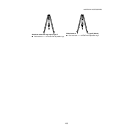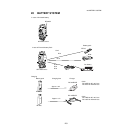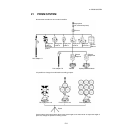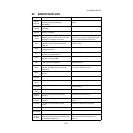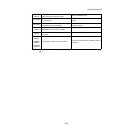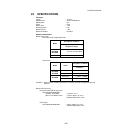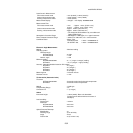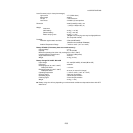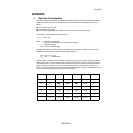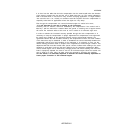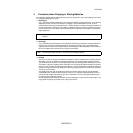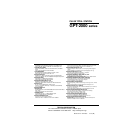
APPENDIX
APPENDIX-1
APPENDIX
3 Dual Axis Compensation
Inclination of the vertical axis with respect to true vertical will result in incorrectly measured horizontal
angles. The extent of the error in horizontal angle measurement due to axis tilt depends on three
factors :
● the amount of the tilt of axis
● the elevation of the target
● the horizontal angle between the direction of till of the vertical axis and the target.
These factors are related by the following formula :
Hz
err
= V•sin
α
• tanh
where v = tilt of axis in arcseconds
α
= azimuth angle between vert. axis direction and target
h = elevation of target
Hz
err
= error in horizontal angle
Example: When the vertical axis is tilted by 30 arcseconds, the target is 10° above the horizon and
rotated 90 in azimuth from the direction of the vertical axis error.
Hz
err
= 30" • sin
α
• tan10°
Hz
err
= 30" • 1 • 0 .176326=5.29"
From the above example it can be seen that horizontal angle errors will increase with steeper vertical
sights (tangent will increase as vertical angle increases) and will be at a maximum when the target is at
right angles (sin 90°=1) to the direction of the vertical axis error. Errors will be at a minimum when the
sights are nearly horizontal (h=0, tan0=0) and in the same direction as the vertical axis error (
α
=0,
sin0=0). Please refer to the table below to see the relationship between axis tilt (v) and elevation (h) and
the error in horizontal angles which results from these factors.
0° 1° 5° 10° 30° 45°
0" 0" 0" 0" 0" 0" 0"
5" 0" 0.09" 0.44" 0.88" 2.89" 5"
10" 0" 0.17" 0.87" 1.76" 5.77" 10"
15 0" 0.26" 1.31" 2.64" 8.66" 15"
30" 0" 0.52" 2.62" 5.29" 17.32" 30"
1' 0" 1.05" 5.25" 10.58" 34.64" 1'
h
V



